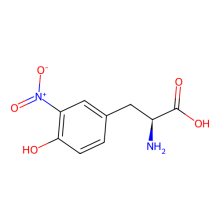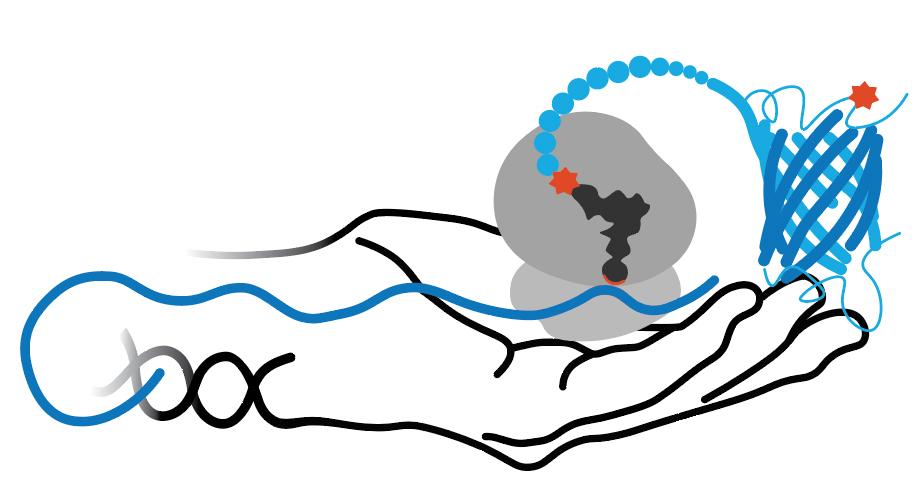RS/tRNA Foundational Publication Support
Porter, Joseph J, Hyo Sang Jang, Elise M Van Fossen, Duy P Nguyen, Taylor S Willi, Richard B Cooley, and Ryan A Mehl. (2019) 2019. “Genetically Encoded Protein Tyrosine Nitration In Mammalian Cells.”. Acs Chemical Biology 14 (6): 1328-1336. doi:10.1021/acschembio.9b00371.
RS/tRNA Pair Development Year
2019
ncAA(s) Incorporated
3-nitro-L-tyrosine
ncAA Structure (png, jpg, jpeg)

ncAA Utility
3-nitroTyr is a natural post-translational modification of proteins typically resulting from protein oxidation by peroxynitrite. It increases in many diseases and with age. Still unknown is if it can be reversed (by a denitrase) and if it has has a purposeful signaling role, or if it is only a modification associated with pathologies. It is known in some cases to contribute to disease pathology, but in most cases it is unknown how much it causes pathology vs. being a consequence of pathology. The ability to site specifically and quantitatively place 3-nitroTyr in positions in proteins that have been seen to occur in association with disease is a key tool to answer questions about its possible roles in normal physiology and disease.
RS Organism of Origin
Parent RS
RS Mutations
P186T
L274R
N311G
C313N
L274R
N311G
C313N
tRNA Organism of Origin
Parent tRNA
tRNA Anticodon
CUA
RS/tRNA Availability
The codon optimized RS and tRNA are available on a pAcBac plasmid as Addgene #141173
RS/tRNA Additional Notes
In E coli, this RS was said to perform about as well as the "5B" nitroTyr MjRS. It generated full-fidelity 3NY incorporation into sfGFP(150) at a yield of ~140 mg/L (~30% efficiency) and had a very low UP50 of ~3 microM. Mn-superoxide dismutase(34) and 14-3-3(130) were also produced in E coli. For use in mammalian cells, adding a nuclear export signal (NES) to the RS improve its efficiency by a factor of ~1.8. As 3NY was toxic to HEK cells at 1 mM, 0.3 mM was used for these expressions. MS analysis showed full-fidelity incorporation into sfGFP(150), and MnSOD(34) and 14-3-3(130) were expressed at ~10-30% efficiencies.
